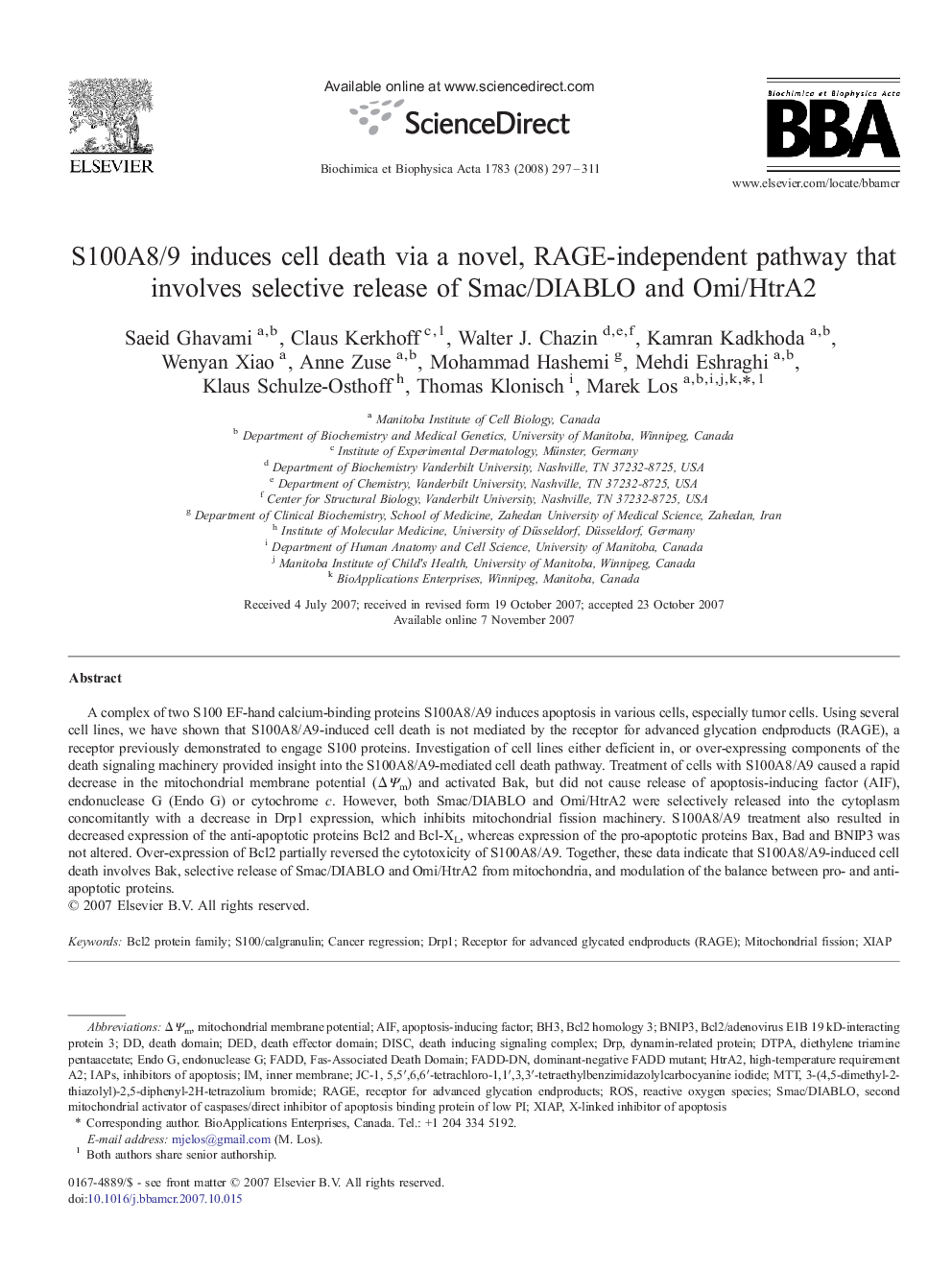| Article ID | Journal | Published Year | Pages | File Type |
|---|---|---|---|---|
| 10803013 | Biochimica et Biophysica Acta (BBA) - Molecular Cell Research | 2008 | 15 Pages |
Abstract
A complex of two S100 EF-hand calcium-binding proteins S100A8/A9 induces apoptosis in various cells, especially tumor cells. Using several cell lines, we have shown that S100A8/A9-induced cell death is not mediated by the receptor for advanced glycation endproducts (RAGE), a receptor previously demonstrated to engage S100 proteins. Investigation of cell lines either deficient in, or over-expressing components of the death signaling machinery provided insight into the S100A8/A9-mediated cell death pathway. Treatment of cells with S100A8/A9 caused a rapid decrease in the mitochondrial membrane potential (ÎΨm) and activated Bak, but did not cause release of apoptosis-inducing factor (AIF), endonuclease G (Endo G) or cytochrome c. However, both Smac/DIABLO and Omi/HtrA2 were selectively released into the cytoplasm concomitantly with a decrease in Drp1 expression, which inhibits mitochondrial fission machinery. S100A8/A9 treatment also resulted in decreased expression of the anti-apoptotic proteins Bcl2 and Bcl-XL, whereas expression of the pro-apoptotic proteins Bax, Bad and BNIP3 was not altered. Over-expression of Bcl2 partially reversed the cytotoxicity of S100A8/A9. Together, these data indicate that S100A8/A9-induced cell death involves Bak, selective release of Smac/DIABLO and Omi/HtrA2 from mitochondria, and modulation of the balance between pro- and anti-apoptotic proteins.
Keywords
DISCDEDRAGEXIAPJC-1DRPDrp1BNIP3BH3FADDIAPSΔΨmEndonuclease GHtrA2DTPA3-(4,5-dimethyl-2-thiazolyl)-2,5-diphenyl-2H-tetrazolium bromide5,5′,6,6′-tetrachloro-1,1′,3,3′-tetraethylbenzimidazolylcarbocyanine iodideMTTROSEndo GAIFSmac/DIABLOMitochondrial fissiondeath domainFas-associated death domaindeath effector domainapoptosis-inducing factorinner membranedeath inducing signaling complexX-linked inhibitor of apoptosisinhibitors of apoptosisMitochondrial membrane potentialDynamin-related proteinReactive oxygen speciesreceptor for advanced glycation endproducts
Related Topics
Life Sciences
Biochemistry, Genetics and Molecular Biology
Biochemistry
Authors
Saeid Ghavami, Claus Kerkhoff, Walter J. Chazin, Kamran Kadkhoda, Wenyan Xiao, Anne Zuse, Mohammad Hashemi, Mehdi Eshraghi, Klaus Schulze-Osthoff, Thomas Klonisch, Marek Los,
